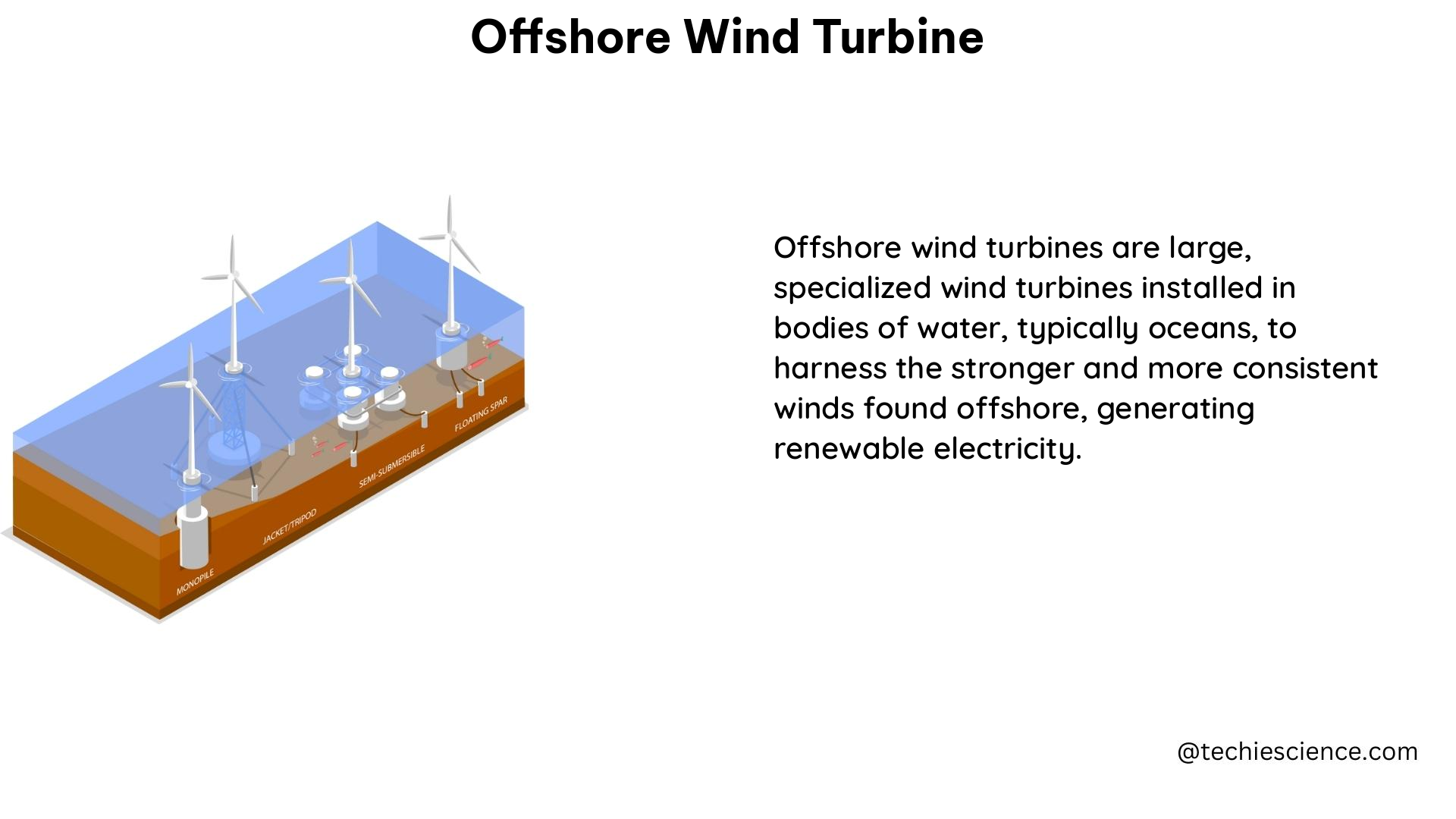Offshore wind turbines have emerged as a crucial component in the global transition towards renewable energy sources. These towering structures, strategically positioned in coastal regions, harness the abundant and consistent winds found offshore to generate clean, sustainable electricity. In this comprehensive guide, we delve into the technical specifications and performance metrics that define the cutting-edge of offshore wind turbine technology.
Turbine Size and Capacity
The size and capacity of offshore wind turbines have been steadily increasing over the years, driven by advancements in engineering and manufacturing. Today, the largest offshore wind turbines can boast a rotor diameter of up to 220 meters and a capacity of up to 15 MW. The GE Haliade-X, for instance, stands tall with a rotor diameter of 220 meters and a remarkable 14 MW power output, capable of generating enough electricity to power approximately 5,000 to 6,000 homes.
Wind Speed and Energy Production

Offshore wind farms benefit from the consistently higher wind speeds found in coastal regions, typically ranging from 7 to 10 m/s. This increased wind resource translates to higher energy production, with a single offshore wind turbine capable of generating enough electricity to power around 5,000 to 6,000 homes. The capacity factor, a measure of a turbine’s actual output compared to its theoretical maximum, can reach up to 50% for offshore wind farms, significantly outperforming their onshore counterparts.
Water Depth and Foundation Types
Offshore wind turbines are typically installed in water depths ranging from 20 to 60 meters, although some floating turbine designs can be deployed in deeper waters. The choice of foundation type is crucial in ensuring the stability and longevity of these structures. Monopiles, consisting of a single steel pile driven into the seabed, are the most common foundation type, accounting for over 75% of offshore wind installations. Other foundation options include jackets and tripods, each with their own advantages and suitability for specific site conditions.
| Foundation Type | Water Depth Range |
|---|---|
| Monopile | 20 – 40 meters |
| Jacket | 30 – 60 meters |
| Tripod | 20 – 50 meters |
| Floating | 60+ meters |
Turbine Height and Rotor Speed
The height of an offshore wind turbine can range from 100 to 250 meters, with the nacelle (housing the generator and other critical components) situated atop the tower. This impressive height allows the turbine to capture the stronger and more consistent winds found at higher elevations, further enhancing energy production.
The rotor speed of an offshore wind turbine can vary from 6 to 20 revolutions per minute (rpm), depending on the wind speed and the specific turbine design. This variable-speed operation ensures the turbine can adapt to changing wind conditions, maximizing energy generation while maintaining structural integrity.
Turbine Lifetime and Reliability
Offshore wind turbines are designed to withstand the harsh marine environment and have an expected lifetime of around 20 to 25 years. However, some turbines have been in operation for over 30 years, demonstrating the remarkable durability and reliability of these engineering marvels. Ongoing research and development in areas such as materials science, structural design, and predictive maintenance are further enhancing the longevity and availability of offshore wind turbines.
Conclusion
Offshore wind turbines represent a technological triumph, harnessing the abundant wind resources found in coastal regions to generate clean, renewable electricity. From their towering stature and massive rotor diameters to their sophisticated foundation designs and variable-speed operation, these engineering wonders are at the forefront of the global energy transition. As the offshore wind industry continues to evolve, the technical specifications and performance metrics outlined in this guide will serve as a valuable reference for those seeking to understand the cutting-edge of this rapidly advancing field.
References:
- Cevasco, D., Koukoura, S., & Kolios, A. J. (2021). Reliability, availability, maintainability data review for the identification of trends in offshore wind energy applications. Renewable and Sustainable Energy Reviews, 136, 110701.
- Sheridan, B., Baker, S. D., Pearre, N. S., Firestone, J., & Kempton, W. (2012). Calculating the offshore wind power resource: Robust assessment methods applied to the U.S. Atlantic Coast. Renewable Energy, 37(9), 2407-2416.
- National Renewable Energy Laboratory (NREL). (n.d.). Wind Data and Tools. Retrieved from https://www.nrel.gov/wind/data-tools.html

The lambdageeks.com Core SME Team is a group of experienced subject matter experts from diverse scientific and technical fields including Physics, Chemistry, Technology,Electronics & Electrical Engineering, Automotive, Mechanical Engineering. Our team collaborates to create high-quality, well-researched articles on a wide range of science and technology topics for the lambdageeks.com website.
All Our Senior SME are having more than 7 Years of experience in the respective fields . They are either Working Industry Professionals or assocaited With different Universities. Refer Our Authors Page to get to know About our Core SMEs.